Prehistoric Power: 30+ Hardcore Creatures That Once Ruled The World
Nature is a realm of delicate, magnificent marvels, but it has an untamed, raw side, too. From the ferocious clash of thunderstorms to the merciless power of volcanic eruptions, nature is beautiful yet frightening. And then there’s the flora and fauna that are trapped in the intricate food web in which surviving is a harsh struggle. But it’s in these predator-prey dynamics that nature shows how intense she can be.
So, in this article, we have brought forth the raw beauty of the wild from eons long gone in vivid detail. These fossils echo from the past, revealing much about nature’s instinctual character and persistent struggles. Hiding behind the placid exterior of artist renderings and dusted-off bones is a realm of primitive desires and never-ending struggles. And through it all, nature reminds us of the intricate fabric of existence, where beauty and savagery coexist peacefully, creating an ever-evolving masterpiece.
The Majestic Sail-Backed Predator
Around 93-112 million years ago, during the Cretaceous period, the world was inhabited by Spinosaurus, the famous sail-backed dinosaur. They were one of the biggest carnivorous dinosaurs ever found and could be easily recognized by the distinctive sail-like structure on their back.
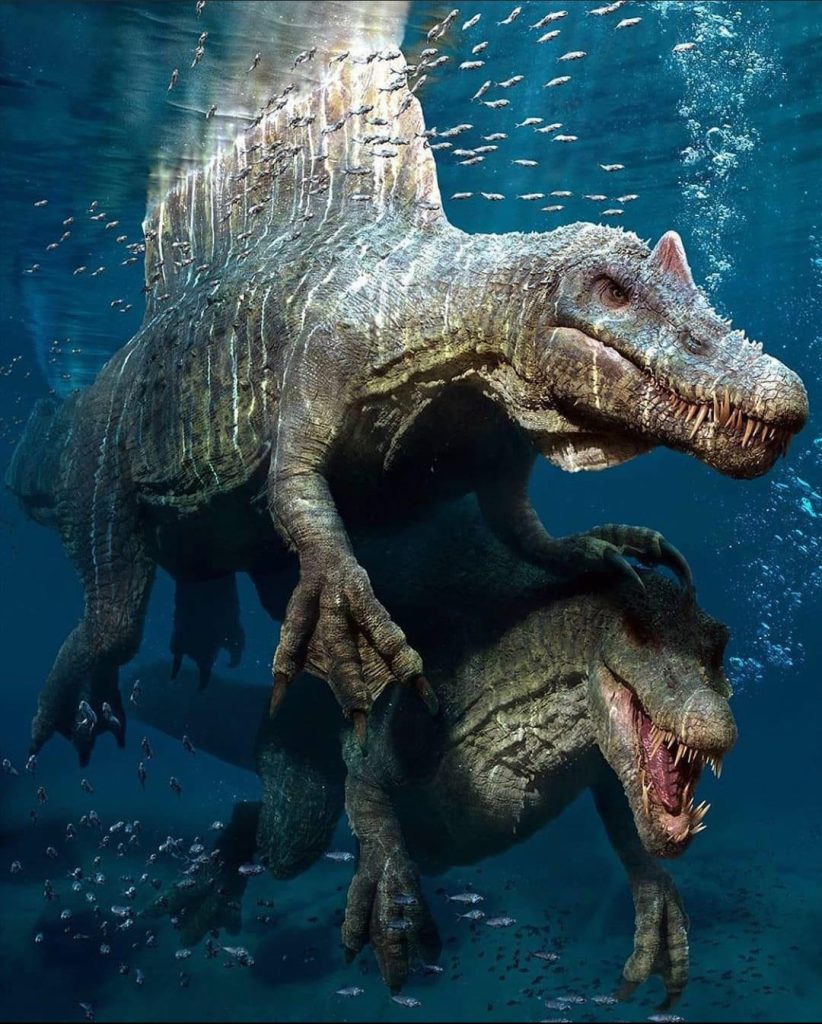
They could grow as long as 50 feet and possessed muscular forelimbs covered with enormous claws and a massive snout loaded with razor-sharp teeth. This apex predator probably spent much time in aquatic habitats, with its sail helping it swim effectively and controlling its body temperature.
Ancient Xiphactinus Resurfaced
A powerful fish from the Late Cretaceous era named Xiphactinus has irreparably altered the fossil record. Xiphactinus was a deadly predator of the ancient oceans, with a long, torpedo-shaped body and sharp, pointy teeth. It could grow 20 feet long and move stealthily in the seas to hunt smaller aquatic animals.
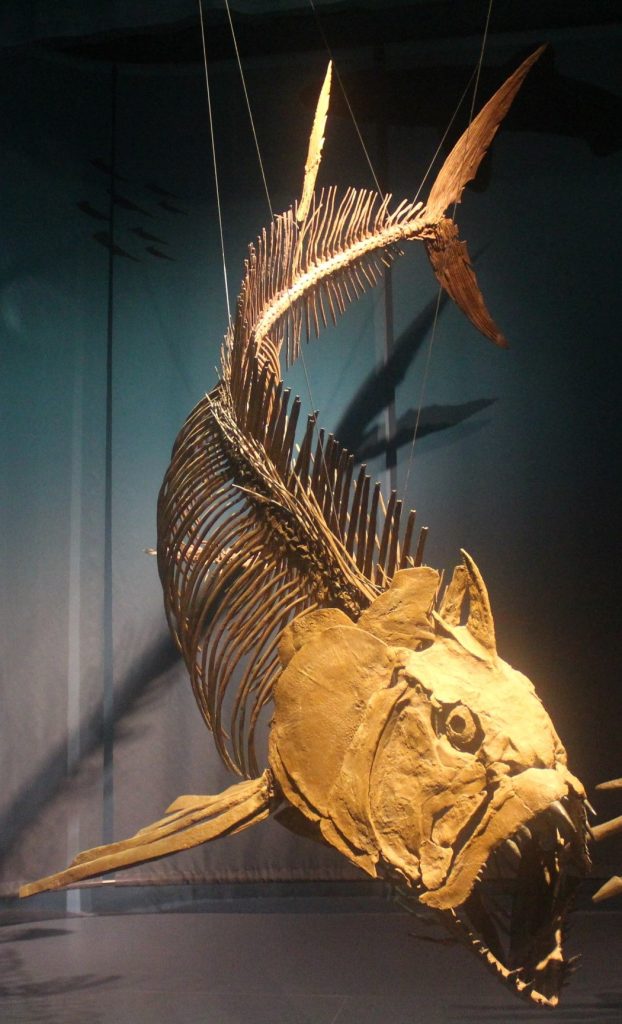
The discovery of this enormous fish’s fossilized bones, which date back more than 40 million years, stunned the scientific community. This enormous specimen, uncovered in Argentina in 2020, provides a remarkable window into the watery realm of the past, where giant monsters once prowled.
195 Million-Year-Old Ancient Marvel
A 195 million-year-old enormous crinoid colony will take you back in time as you marvel at its stunning splendor. This Lower Jurassic-era masterpiece, measuring 4 x 5 meters, is currently the center of attention at a museum in Houston, Texas.
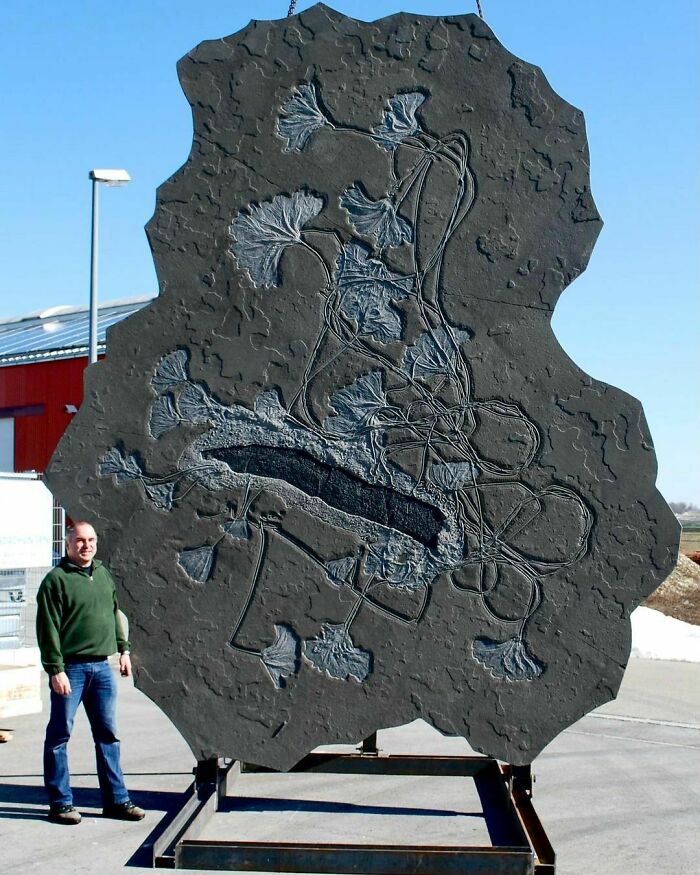
With a delicate and complicated structure, this old crinoid colony leaves a prominent mark of the bygone age. These aquatic invertebrates thrived in primordial waters and resembled beautiful underwater gardens. The exhibit in Houston encourages a profound appreciation for the prehistoric species that once flourished in Earth’s prehistoric waters.
Ancient Remains of Extinct Elk
Fishermen off the coast of Ireland made an incredible find when they came across the skull and antlers of an elk. Later, they were astounded to know that it was no ordinary skull. These exceptionally well-preserved remains were of the beautiful gigantic elk, which went extinct almost 10,000 years ago.
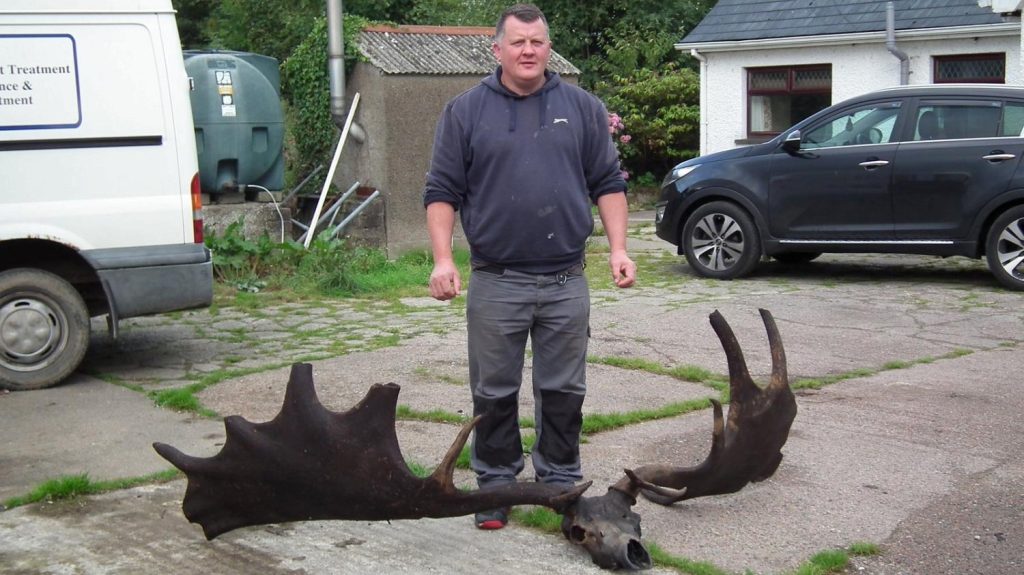
The millennia-old skull and antlers provide crucial information about the diverse fauna that flourished in Ireland during the last ice age. This discovery offers researchers a rare chance to examine the anatomy and behavior of the extinct elk, which was taller than contemporary elks.
The Eccentric Elegance of Nature’s Frilly-Limbed Aliens
Whenever there is a beautiful scene beneath the ocean, you can bet that crinoids will be there. These marine creatures have existed for about 350-450 million years, though some species are still alive today. With long arms covered in feathery appendages, these odd beings resemble frilly-limbed aliens.
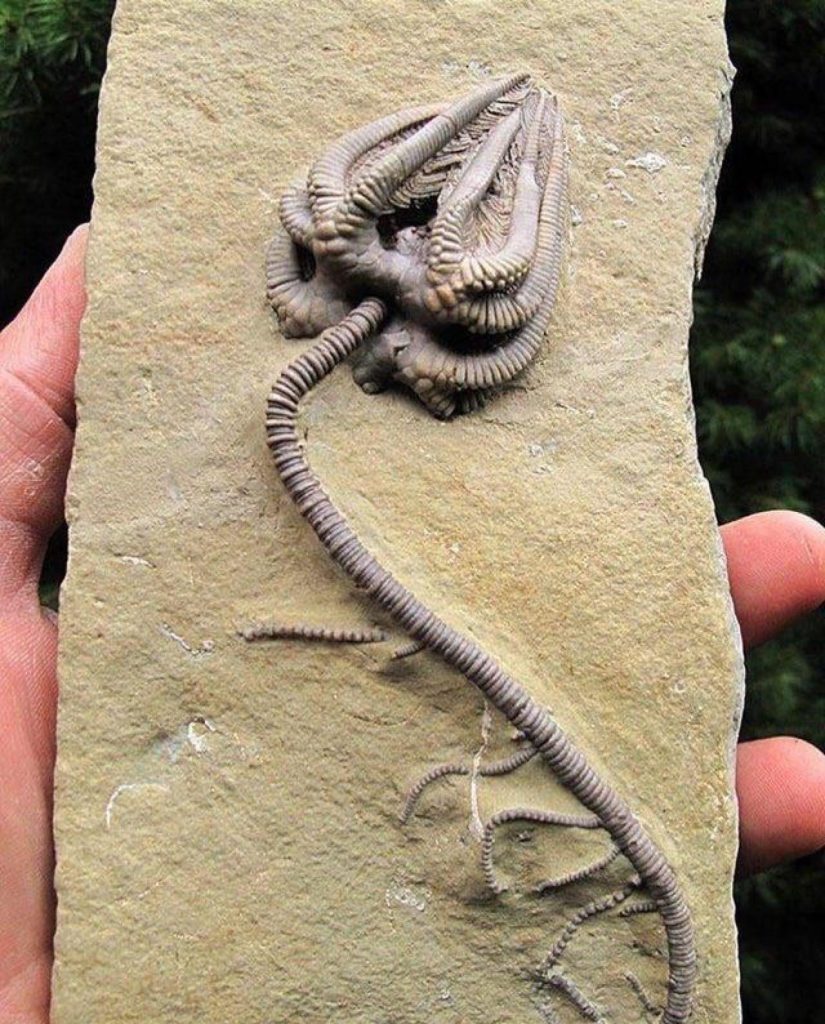
However, do not be deceived by their glittering look. The ability of crinoids, especially the large ancient ones, to hold onto the ocean floor is beyond belief. This is probably why the old crinoid fossil is still so intact. Its powerful grasp on the seabed must have kept it from getting distorted in the fossilization process.
Giants of the Past
Long ago, animals from the genus Eremotherium roamed the Earth. It was an enormous ground sloth that inhabited the ancient landscapes of the Americas. As a member of the megafauna, Eremotherium was a majestic monster that could grow up to 20 feet long and weighed several tonnes.
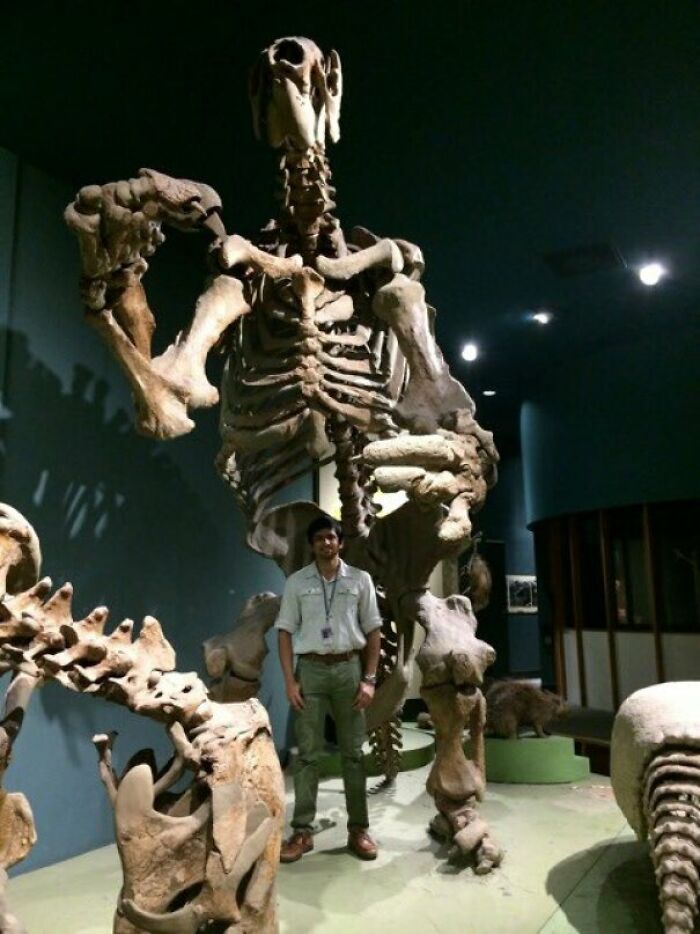
These gentle herbivores grazed upon the vegetation of their time, leaving their indelible mark on the ecosystems they inhabited. According to fossil data, they likely had a widespread distribution over North and South America. But at the end of the Pleistocene, extensive climate change and habitat loss may have caused their demise.
Clash of the Ancients
A fascinating and uncommon discovery, the “Fighting Dinosaurs” fossil depicts a thrilling conflict frozen in time. The fossil showcases a Velociraptor and a Protoceratops involved in a bloody fight and preserved in a fatal battle. It provides a mesmerizing look into the prehistoric world of dinosaurs.
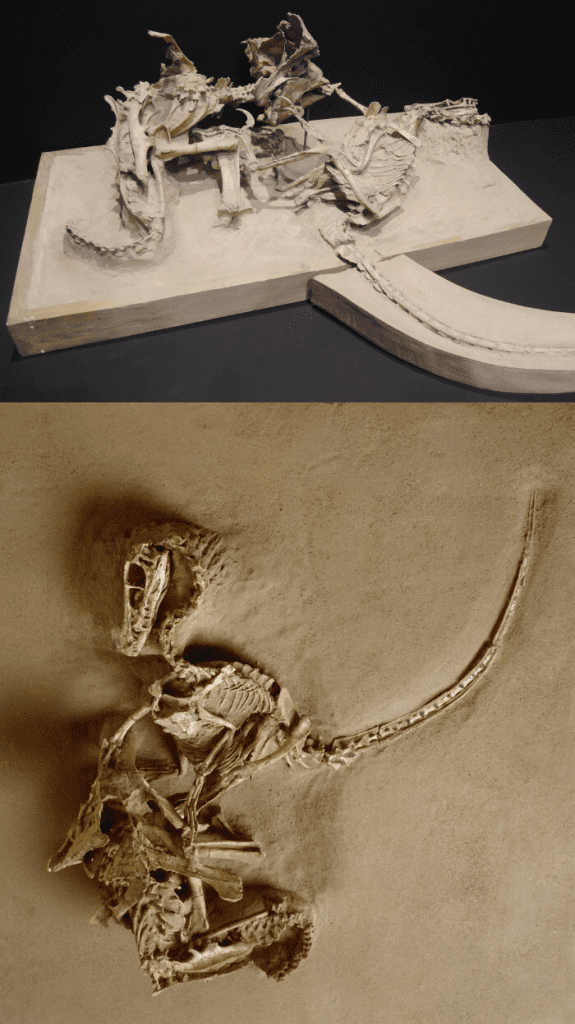
In addition to capturing the imagination, this fossil offers a fascinating challenge for those studying paleontology. Due to the conservation of fine features in this fossilized encounter, scientists could analyze the anatomy and behavior of both species, providing valuable insights into predator-prey interactions and fights for survival in the ancient past.
The Skull of the Apex Predator
The terrifying Utahraptor had a massive head that would match its position as a deadly apex predator… if it were alive today. The large snout, pointed teeth, and strong jaws in its skull demonstrate the dinosaur’s adaptability and hunting capabilities.
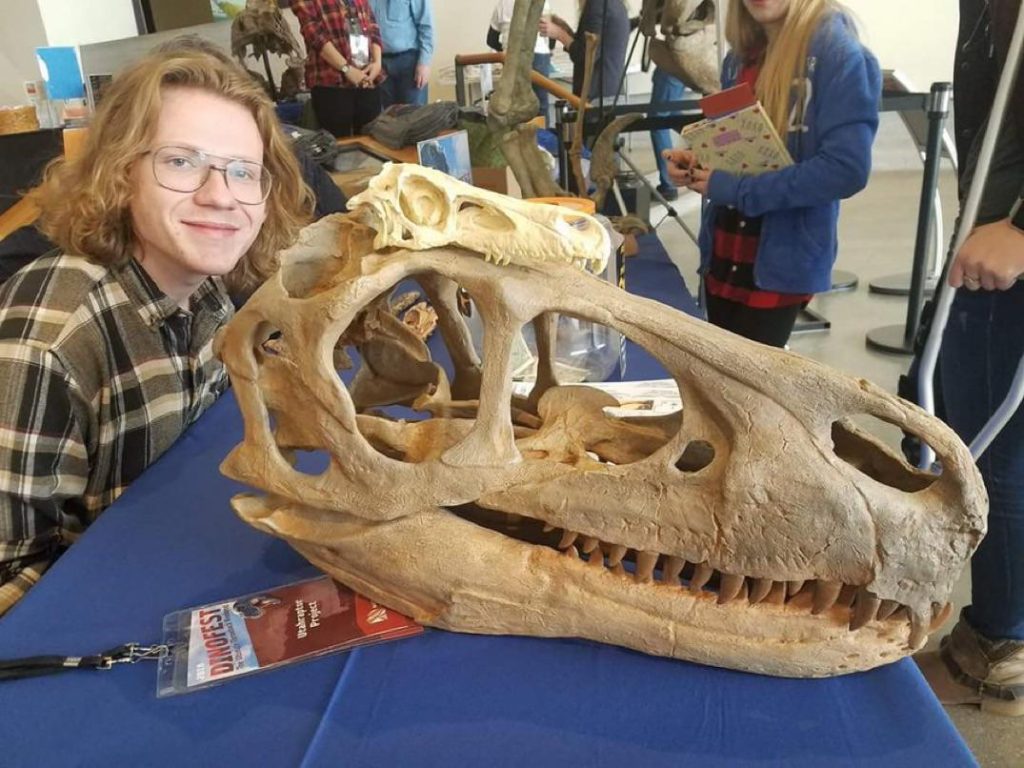
Its skull anatomy suggests it had incredible strength to overwhelm and subjugate its prey, while its sharp teeth were ideal for grabbing and ripping apart the animal. The rich characteristics of its skull reveal the tale of a fearsome hunter who once dominated prehistoric landscapes.
Time Capsule Unearthed
On paper, it might not seem like much, but the discovery of this fragment of a dinosaur’s tail was a groundbreaking moment for archelogy. What makes it astounding are the feathers. This fantastic specimen, which is 99 million years old, looks amazing and provides a unique glimpse into the distant past.
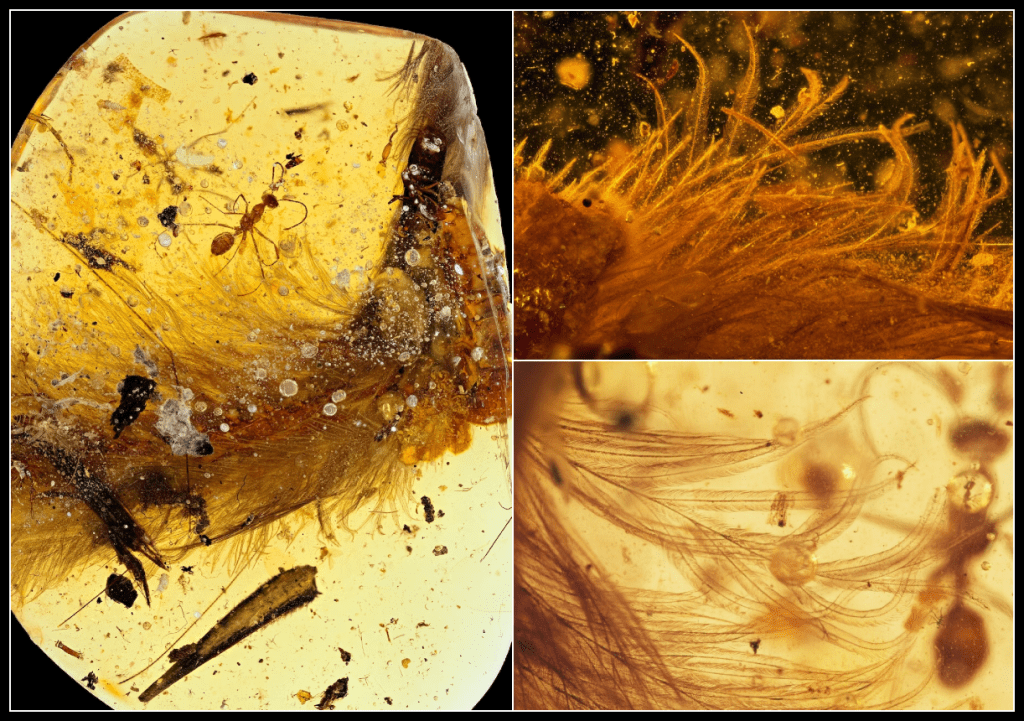
We can piece together the rich story of this prehistoric creature’s life with the help of each feather and bone. Its body, though frozen in time, is a “live” illustration of the craftsmanship of evolution. The intricate beauty and scientific relevance contained within this ancient time capsule humble us as we explore it.
Breathing Life into the Boar-Croc
Often called the “Boar-Croc,” Kaprosuchus is an extinct crocodile from the late Cretaceous period. Its distinct name derives from its intimidating crocodilian traits and snout that resemble a hog. In a merging of worlds, we see an artist working on a bust of a Kaprosuchus…
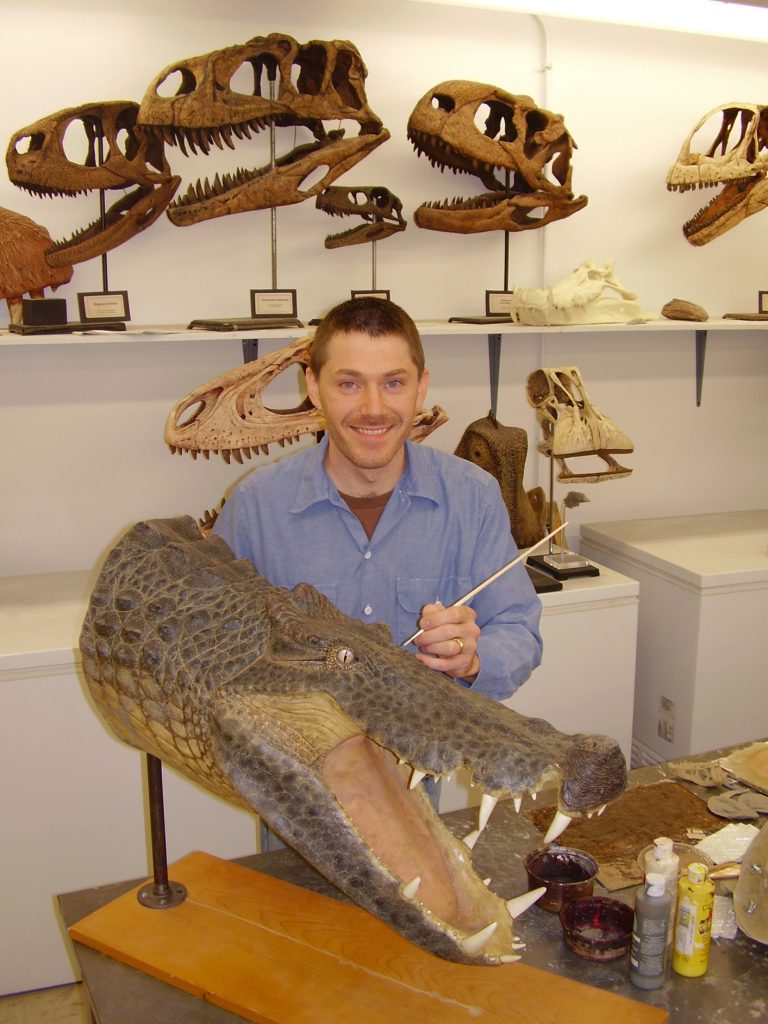
The artist strives to create a 3-dimensional sculpture of Kaprosuchus with painstaking attention to detail. The life-sized bust, which displays the predator’s pointed fangs, large snout, and powerful physique, perfectly portrays the spirit of this prehistoric predator. Indeed, the artist has brought life to an extinct species!
Unveiling the Unrivaled
Witness the reveal of the unrivaled: the best-preserved dinosaur specimen ever uncovered. A mummified nodosaur preserved for 110 million years emerges with its bones still protected by flawless skin and armor. This extraordinary find transports us to the depths of primal existence, where the creature’s last moments are frozen in time.
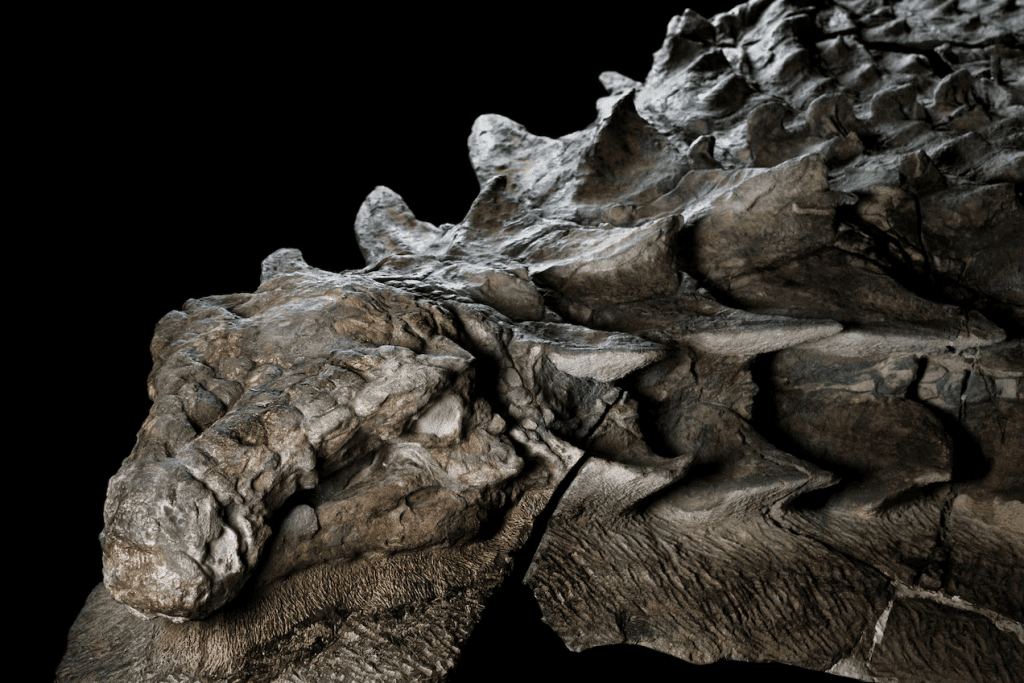
It transforms into a vivid window into the fascinating realm of giant reptile monarchs, providing a unique insight into their majestic anatomy and the secrets behind their demise. This groundbreaking discovery captures our attention and compels us to reflect on the incredible wonder and remarkable fortitude of Earth’s prehistoric inhabitants.
The Claws of Thunder
Utahraptor‘s extraordinarily deadly claws have always been a thing of attraction for scientists and paleontologists. The Utahraptor was a vicious dinosaur that is said to have existed approximately 125 million years ago. Their lethal claws, almost 10 inches long, curled, and sharp, were perfect for slicing and grabbing prey.
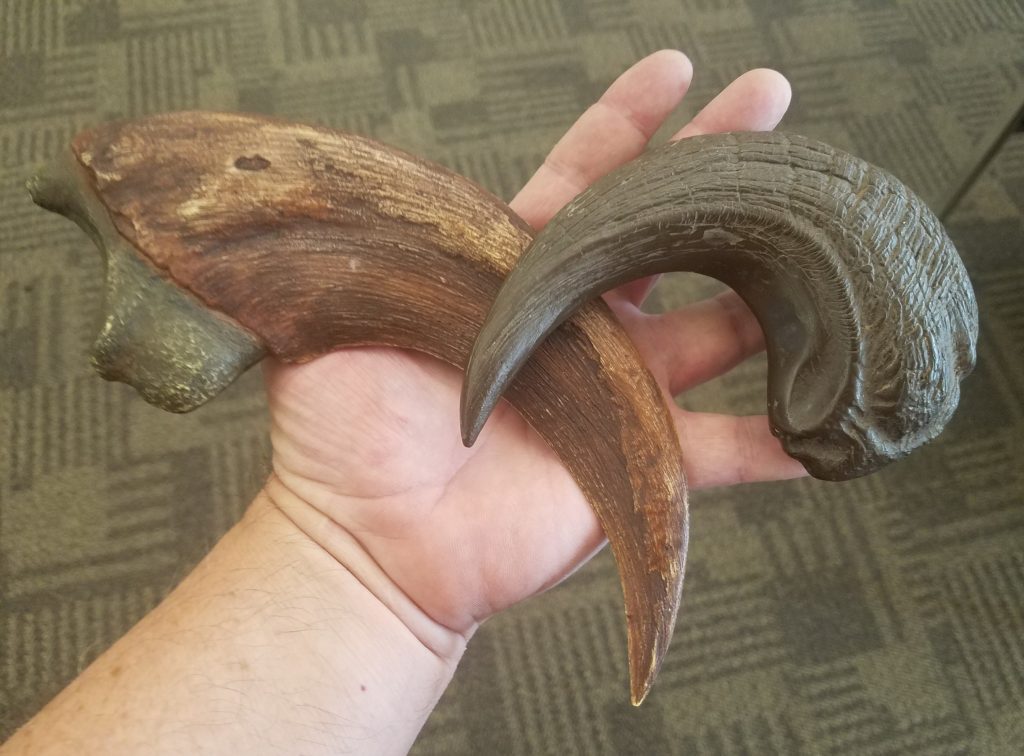
These claws reveal vital details about Utahraptor‘s behavior and hunting methods. The giant dinosaur could take down larger prey by dismembering its victims with the help of its razor-sharp claws. We wonder how the era must have been when such monstrous claws controlled the ancient terrain!
The Enigmatic Sea Serpent of the Whales
A mysterious genus from the Eocene era named Basilosaurus is a spectacular illustration of convergent evolution. Its elongated appearance and serpentine nature baffled scientists, and for a while, it was proposed that it was a marine reptile. But in reality, Basilosaurus was a giant toothed whale.
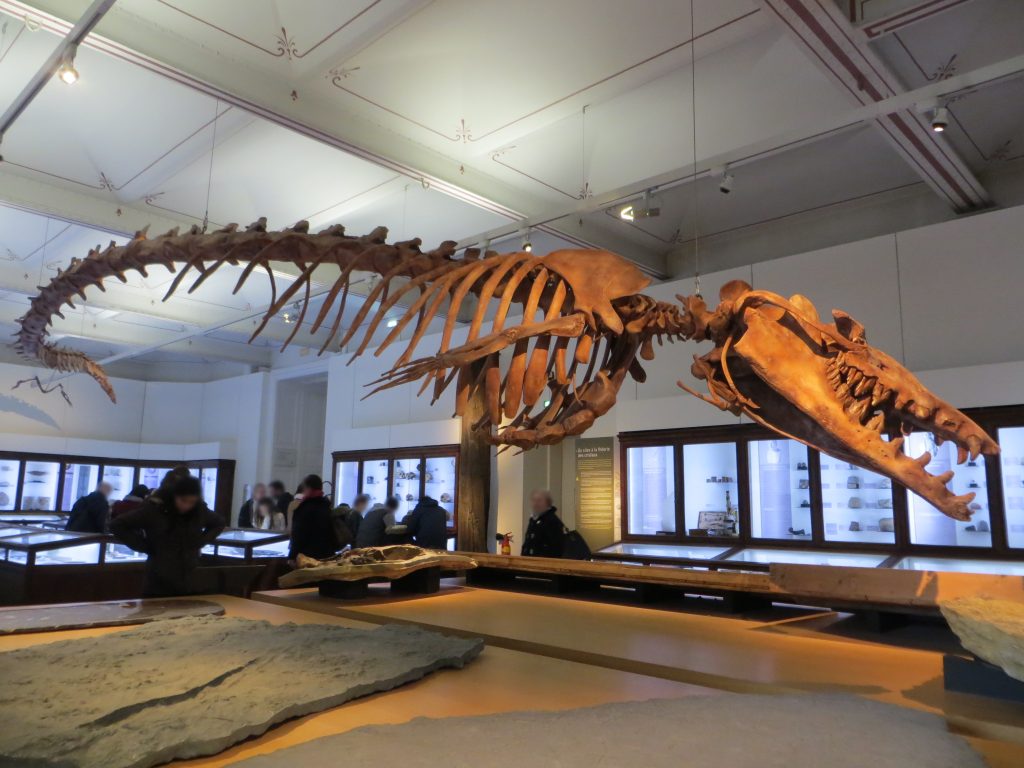
This extinct whale, which could grow to be 60 feet long, had a long, pointy snout meant for hunting down fish and other marine prey. However, the amazing aquatic adaption of Basilosaurus exemplifies the variety of evolutionary routes that marine animals have taken.
A Tale of Two Femurs
Examining the enormous femur of a Triceratops next to the femur of a Loxodonta (an African elephant) reveals a startling contrast. The femur of the elephant pales in comparison to that of the Triceratops. Thus, this juxtaposition highlights the enormous magnitude and power.
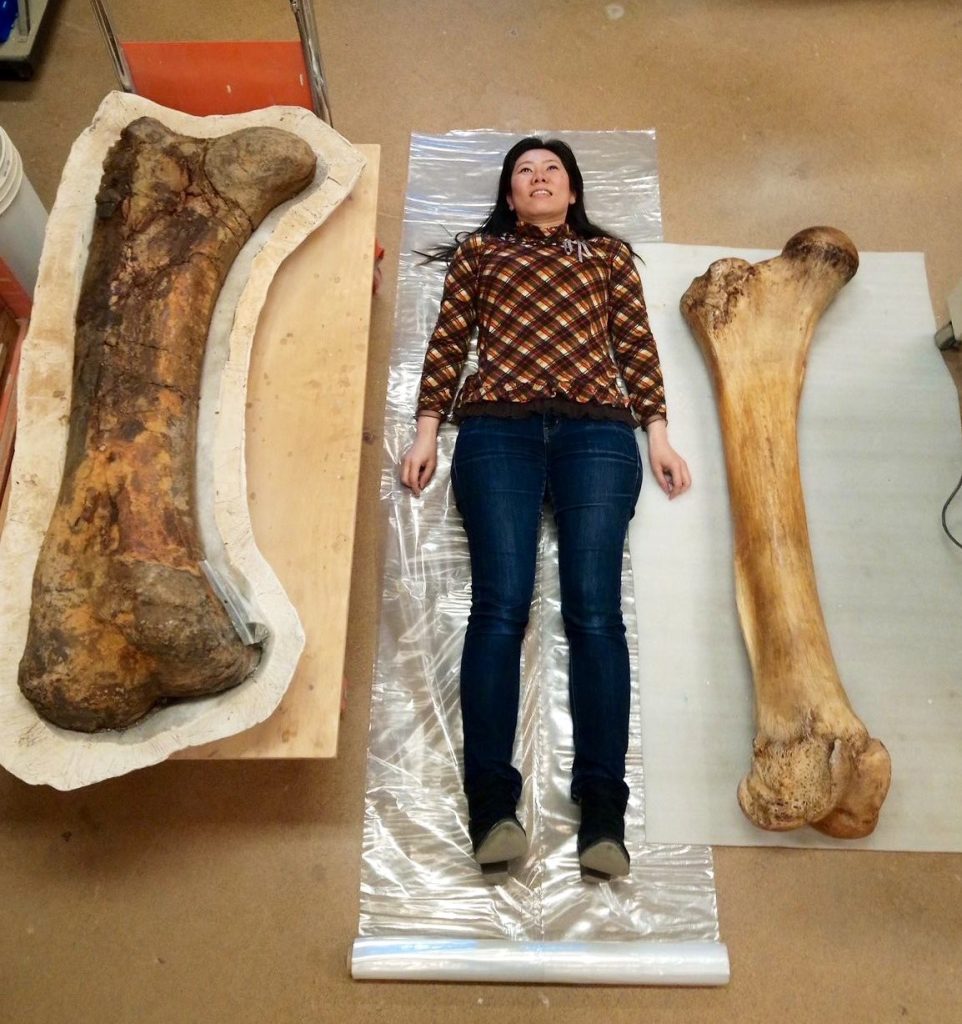
The sturdy construction and imposing scale of this renowned dinosaur show the stability and strength needed to maintain its enormous bulk. And the elephant femur is remarkable in its own right. It reminds us of the modern-day giants inhabiting our planet and demonstrates the intriguing development of large-bodied species throughout history.
“Jawsome” Adventure with Spinosaurus!
Nizar Ibrahim, a well-known paleontologist, seems stuck between the enormous jaws of a dangerous Spinosaurus in an unexpected turn of events. He can’t help but appreciate the excellent teeth work of this prehistoric predator as his heart rushes faster than a T-Rex on skates.
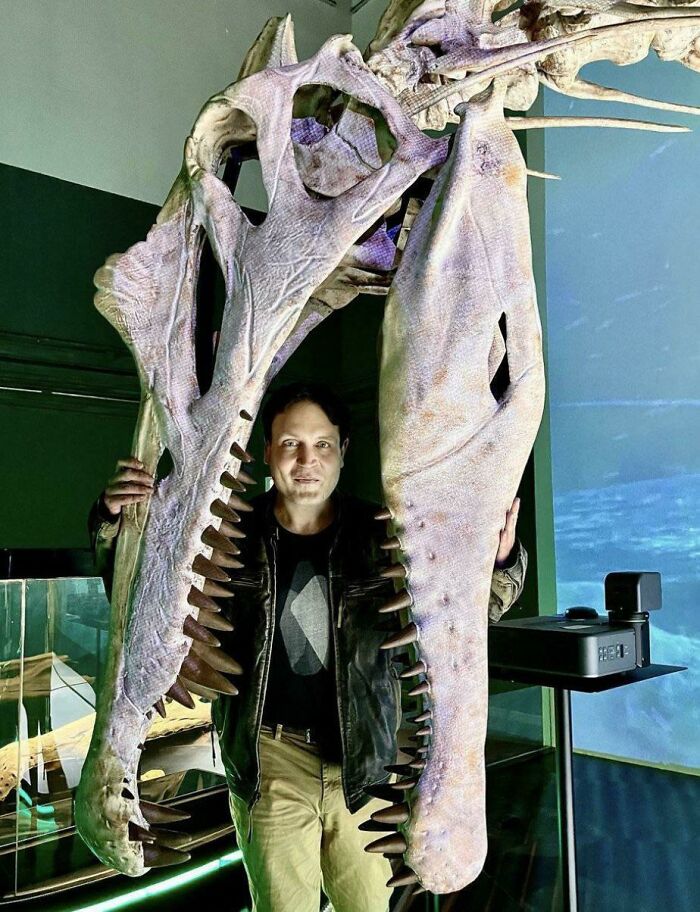
His talent for finding fossils has brought him to the pinnacle of discovery and a new role as a dino’s tooth floss. In this image, Nizar shows us the joy and delight these brilliant minds have upon beholding their latest discovery.
A Mighty Whale
This massive whale from the Miocene era, called Livyatan, served as a fearsome rival and apex predator to the powerful Megalodon (Otodus megalodon). With a skull that measured an incredible 3 meters in length, Livyatan was a force to be reckoned with in the ancient oceans.
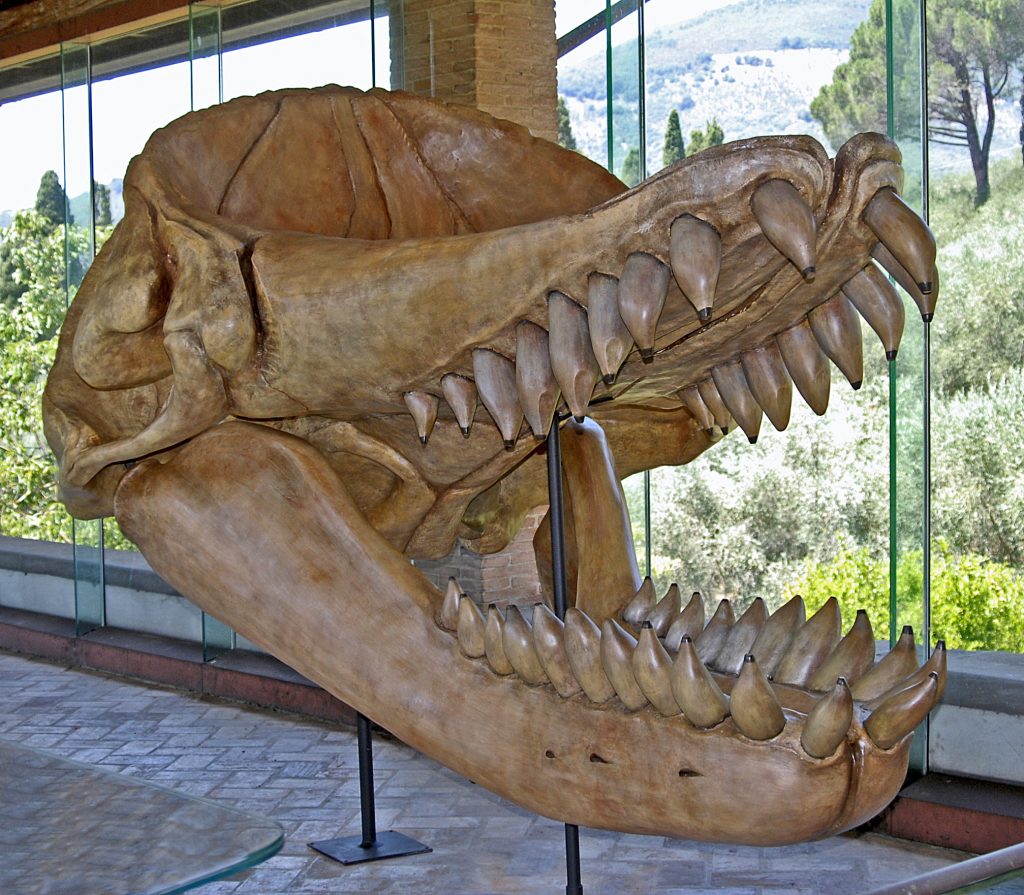
Its 36 cm-long teeth set a record for size among all known mammals. Livyatan established supremacy in its aquatic habitat thanks to its enormous size and razor-sharp teeth, which were formidable adaptations for predation and hunting. Thus, this fossil upholds an intriguing evolutionary history of whales.
Barosaurus and Its Towering Neck
Barosaurus, a spectacular dinosaur from the late Jurassic era, is famous for its extremely long neck. And it has been perfectly depicted in the below-given John Conway’s artistic interpretation. Conway’s artwork vividly depicts Barosaurus‘ enormous size and beautiful stance with meticulous attention to detail.
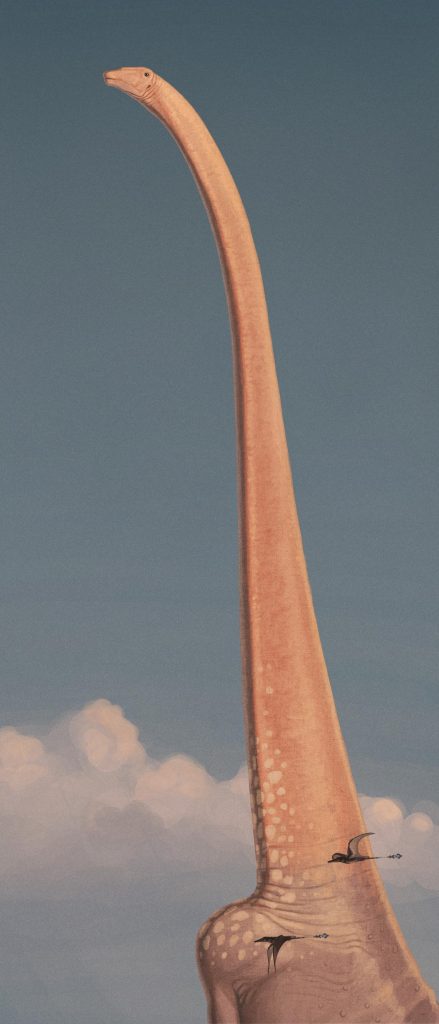
In addition to displaying the remarkable anatomical complexity of the dinosaur’s neck, this elegant representation emphasizes the extraordinary flexibility and strength needed to maintain such a lengthy appendage. Who knows, this trait of Barosaurus might have made them in charge of surveillance during the Jurrasic period!
Titans of the Insect World
The giant millipede, or Arthropleura, holds the record for being the biggest land invertebrate that has ever existed on Earth. This extinct arthropod, which inhabited the Earth around 300 million years ago, grew to massive lengths of more than 8 feet.
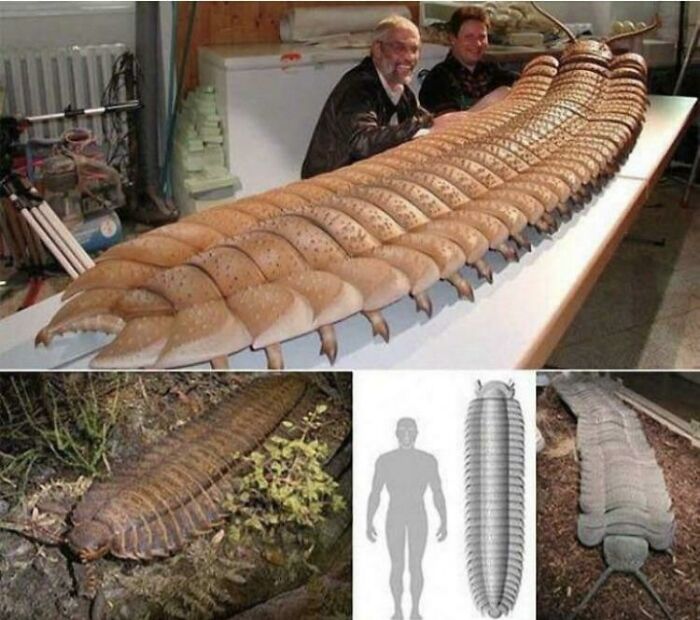
It is believed that the moist, oxygen-rich atmosphere during the Carboniferous epoch contributed to the enormous size of this millipede. However, the climate started drying up at the end of the Carboniferous period, leading to the death of this species.
Discovery of Ferocious Dromornis
These leg bones of the great Dromornis, an extinct big bird from Australia, were discovered during an exciting dig. They provide a fascinating look into the prehistoric avian world. These fossils demonstrate the Dromornis‘ leg size and shape, highlighting the creature’s substantial adaptations for a terrestrial existence.
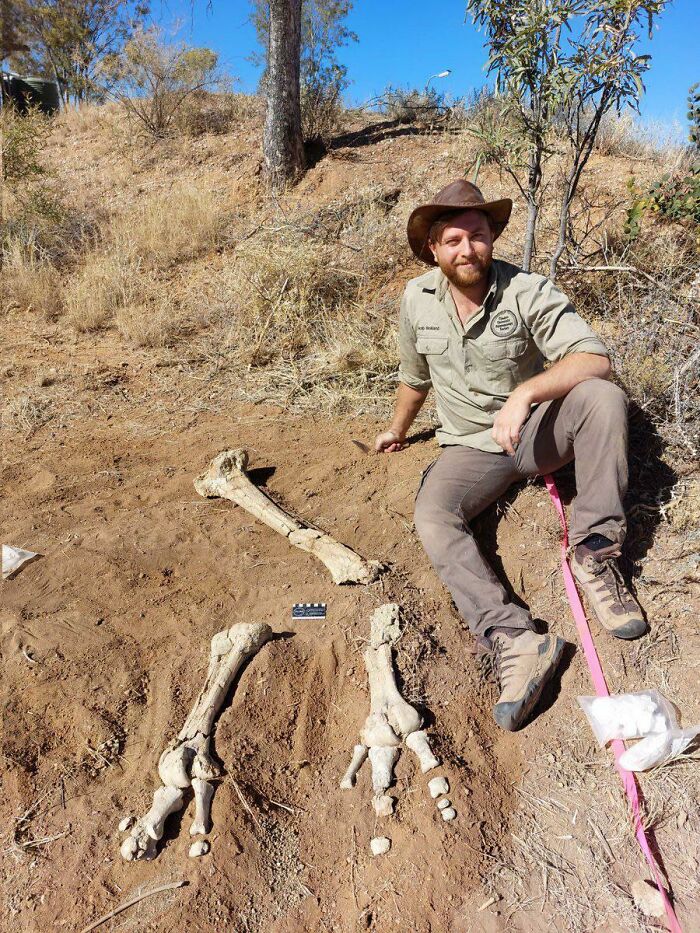
The Dromornis, also known as the “mihirung” or “thunderbird,” was almost 3 meters tall and had strong legs for easy travel over the archaic terrain. This discovery of Dromornis leg fossils is an exciting milestone in the process of solving the puzzle of Australia’s distinctive bird evolutionary history.
The Ancient Sea Monster of Unmatched Ferocity
The enormous prehistoric fish, Dunkleosteus, dominated the ancient waters with unrivaled fury. This armor-plated predator lived around 358 to 382 million years ago, during the late Devonian era. Dunkleosteus was a frightening-looking creature, reaching lengths of up to 33 feet and weighing a startling 4 tonnes.
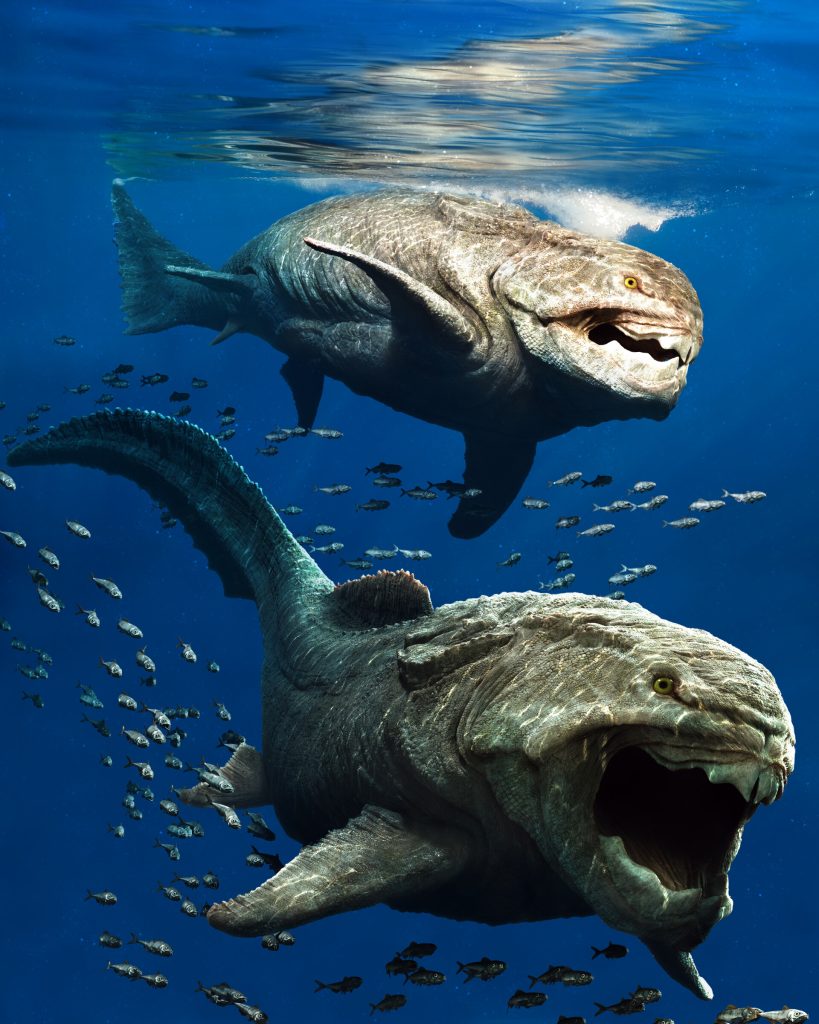
They had a unique eating method and one of the fiercest bites in history. Although they didn’t have teeth, Dunkleosteus’ hinged jawbones had bony plates extended from their skull. Thus, whenever they opened and closed their mouth, those bony fangs crushed and swallowed the prey with a biting force of about 8,000 pounds.
The Enormous Jaws at Las Vegas
Travelers are in for a treat at the Las Vegas airport, where a magnificent Megalodon fossil takes center stage with its original fangs intact. The broad jaws of the fossil, found by a lone diver searching for such prehistoric artifacts, attract onlookers as they go through the airport.
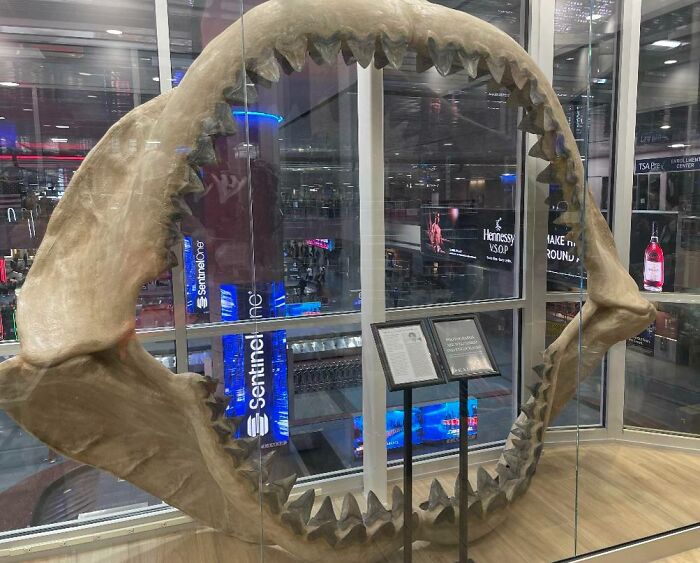
Apart from educating visitors, this display at the airport also arouses their interest and sense of awe in prehistoric times. This, in turn, enables them to connect with the distant past and appreciate the amazing creatures that existed before us.
Unveiling the Ancient Turtle of Late Jurassic China
Stunning evidence of the extinct turtle species Sinemys gamera from Late Jurassic China has been found. This turtle, whose name honors the mythical Kaiju, offers insights into the primordial world. Around 160 million years ago, Sinemys gamera flourished and had a rare combination of aquatic and terrestrial adaptations.
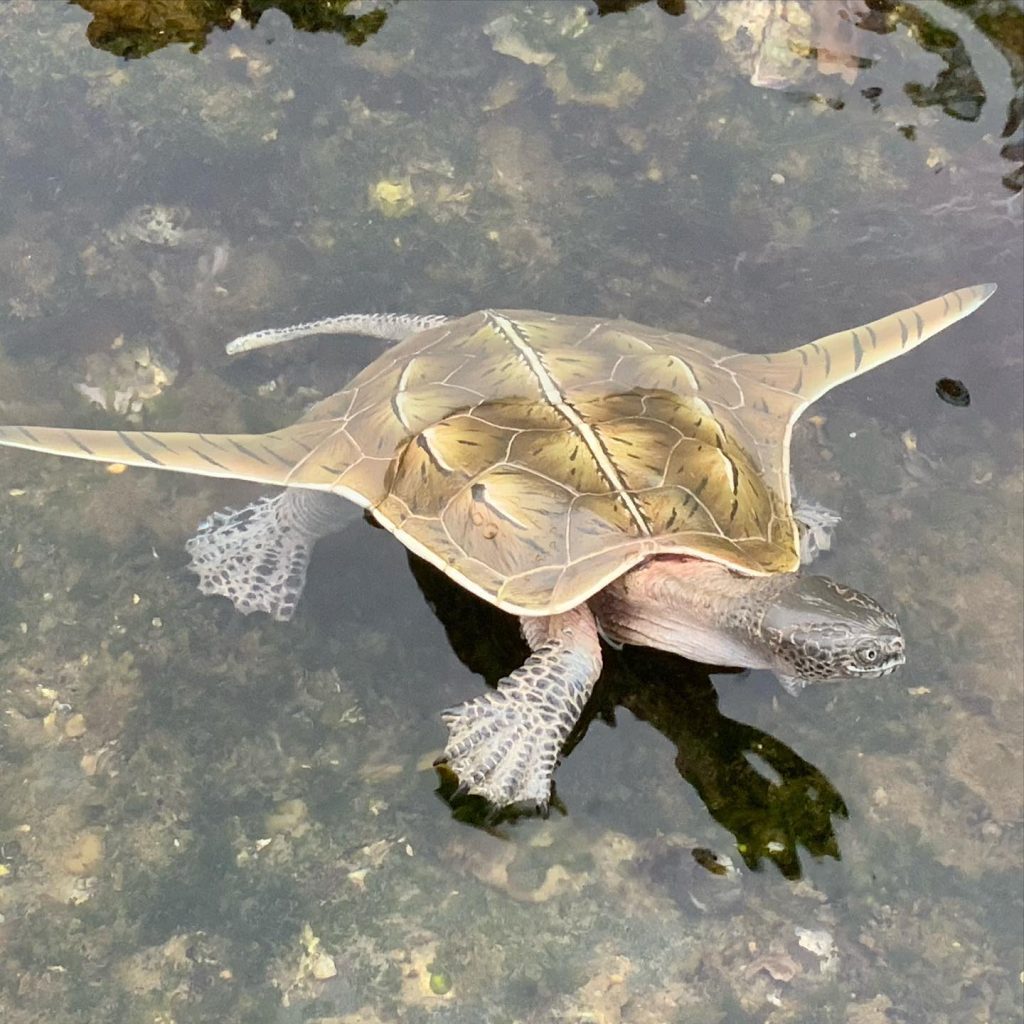
Sinemys gamera was around 30 centimeters long, with a shell of strength and beautiful designs that served as protective armor. Its discovery has narrowed the gap between the turtles’ ancient aquatic existence and their transfer to the land, shedding information on how they have changed throughout their history.
Arachnid Time Capsule
In present-day Myanmar, an ancient spider-like creature emerges from an amber-preserved fossil. This invertebrate provides a unique view into the mysterious world of arachnids that once roamed our globe but are trapped in their golden prison for millions of years.
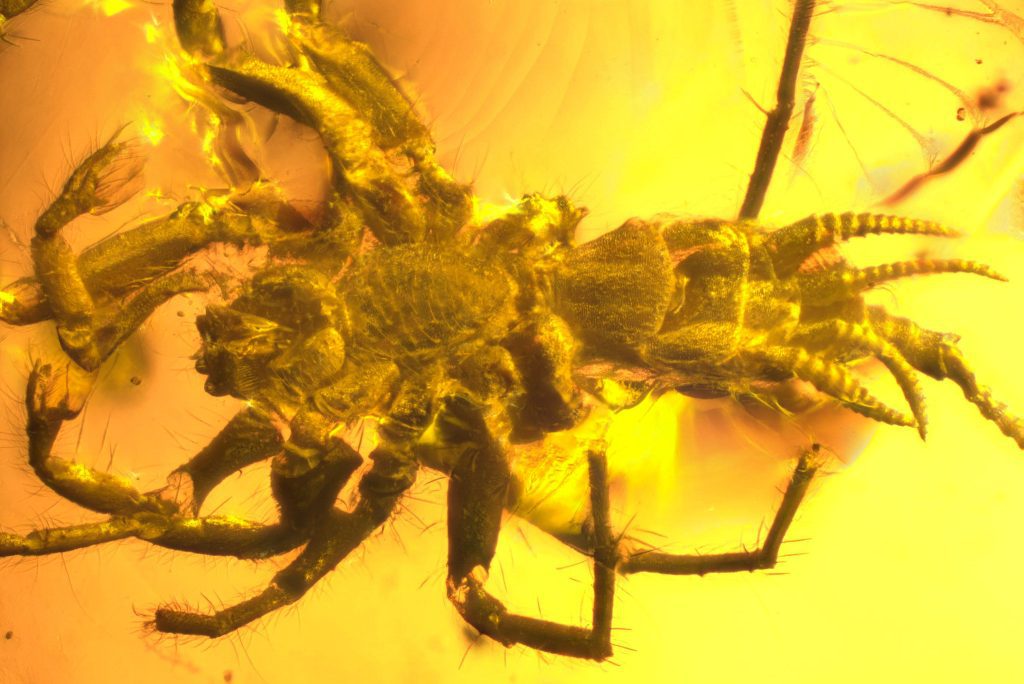
The spider preserved in amber is an amazing example of the variety of organisms that previously existed on Earth. It transcends into a bygone period and sheds light on the life of prehistoric arachnids and their function in primitive ecosystems.
Traces of Time
An astounding show of human creation took place inside the magical world of Argentina’s Cueva de las Manos. The cave walls testify to an abundance of hand stencils created by several people who lived hundreds or thousands of years ago. Their artwork endures as a visible reminder of their existence.
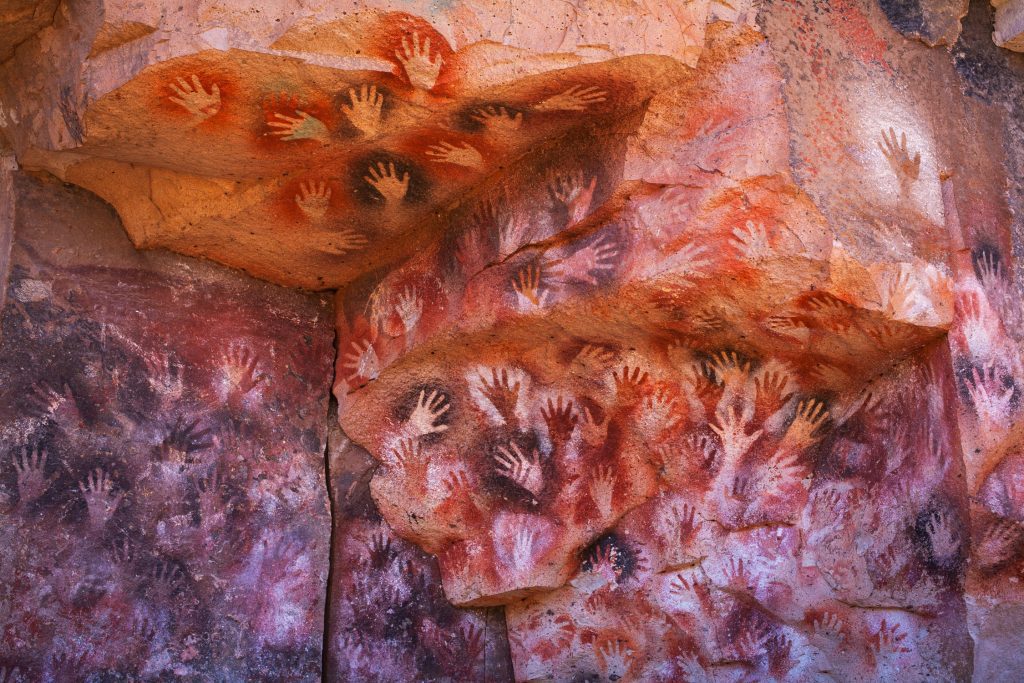
These prehistoric handprints enchant us as we see the rich history of human expression. Each handprint uniquely represents a particular person whose influence may be felt throughout time. Cueva de las Manos is a potent reminder of our common human ancestry and the yearning to make a lasting impression on the world.
The Battle-Scarred Pelvis
Weighing an astounding 440 pounds, this Moa bird’s fossilized pelvis describes a bloody conflict with a Haast’s Eagle. This historic battle took place in New Zealand, the former home of the extinct Haast’s Eagle, a bird with a 10-foot wingspan.
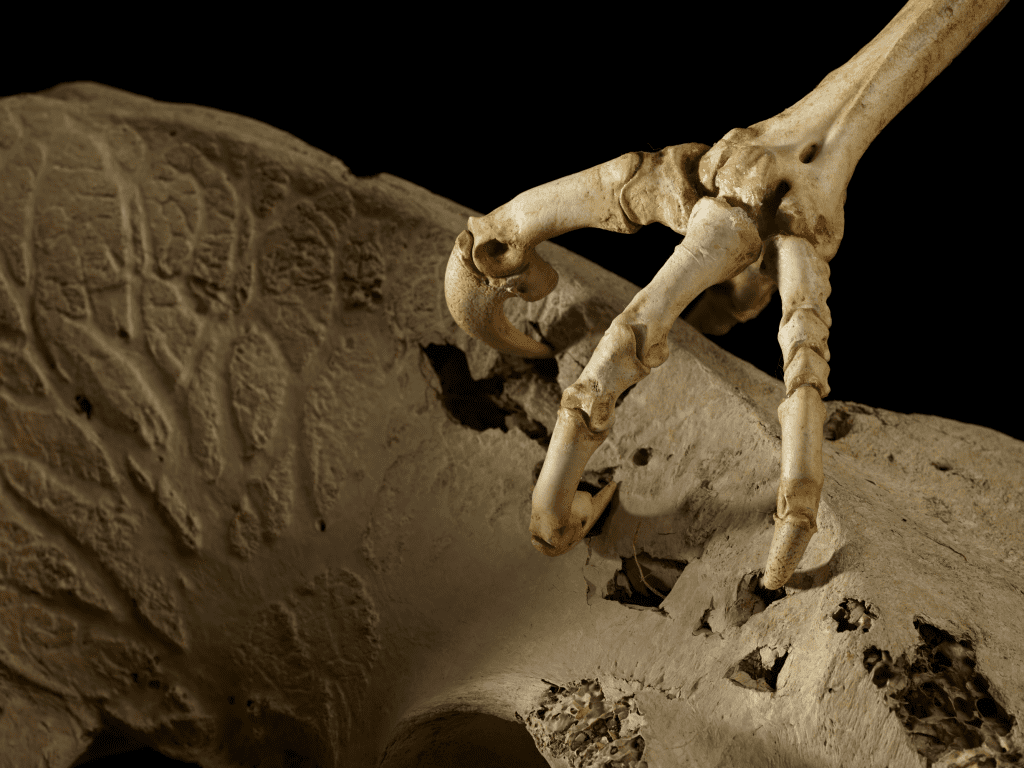
The punctured wounds on the Moa’s pelvis showcase how actively the eagle might have pierced its talons. This Eagle species was explicitly known for its predatory tendencies and skilled at taking down big games, even against enormous Moa. Its talons could exert tremendous power, leaving life-long imprints as in this fossil.
The Permian Amphibian with a Twin Identity Crisis
Prepare to plunge into Diploceraspis‘ primordial pool of aquatic antics! This quirky lepospondyl amphibian was a life from the Permian era of North America. With a boomerang-shaped head and a salamander-like body, it was a close relative of Diplocaulus, thereby having a double identity crisis.
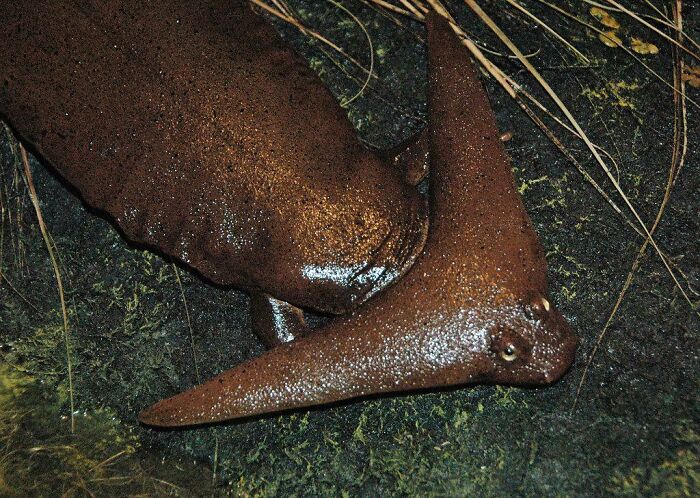
With a similar appearance, this fascinating creature had scientists scratching their heads and turned the classification of its species into an amusing guessing game. However, Diploceraspis was smaller in stature than its doppelganger, elevating amphibian attire to a higher degree.
Amber Chronicles
An Enhydro methane termite that is 22 million years old has been preserved in amber, providing a window into the prehistoric era. This astonishing find not only displays the fine characteristics of the termite but also preserves its final meal, offering a once-in-a-lifetime opportunity to study the nutrition and behavior of these ancient insects.

A further element of mystery is added by including its last meal, which enables researchers to piece together the complex connections of the food chain that existed millions of years ago. No wonder the finding of this unique fossil exhibits the true significance of preservation!
A Majestic Display at the Morrison Natural History Museum
The skull of Triceratops horridus is proudly on display at the Morrison Natural History Museum, Colorado. Around 66-68 million years ago, this famous dinosaur inhabited the Earth during the late Cretaceous period. Its characteristic frill and three-horned face are its most distinguishing features.
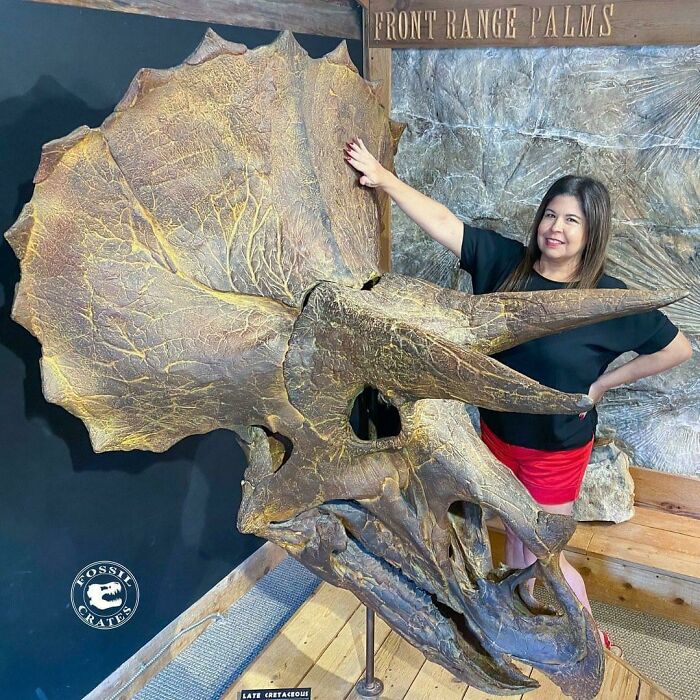
The Triceratops horridus skull fossil is an astonishing 9 feet long, demonstrating the size and strength of this formidable ruminant. Every characteristic of this skull is so well-detailed, from a prominent nasal horn to sizable forehead horns. Indeed, this fossil display deserves appreciation for its preservation.
The Enigmatic Tooth
The tooth of Liopleurodon, a terrifying marine reptile that swam the seas during the Jurassic era, was discovered in Peterborough city of England. One of its era’s biggest and most dangerous predators, Liopleurodon, was renowned for its enormous size and strong teeth.
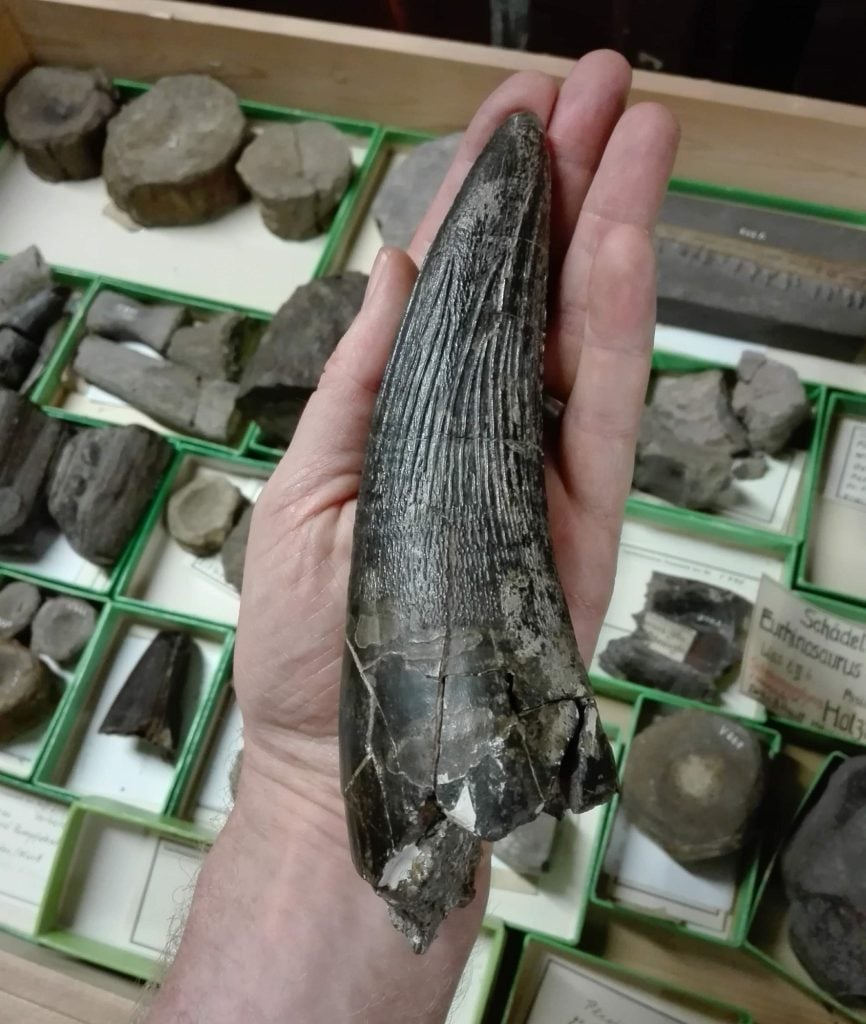
The size and conical structure of the tooth are self-explanatory about its sharpness and power. Liopleurodon had a tremendous bite force of about 7700 psi. Their teeth could not only grab and rip apart the prey but also engulf half of a contemporary medium-sized car in a bite.
The Singular-Toothed Placodont of the Late Triassic
A placodont lizard known as Henodus, which flourished in the Late Triassic, has a special place in the annals of prehistory. Its Greek name, “Henodus,” accurately captures its distinctive quality: a solitary tooth. It was distinguished from other placodonts by this single tooth situated on either side of its mouth.
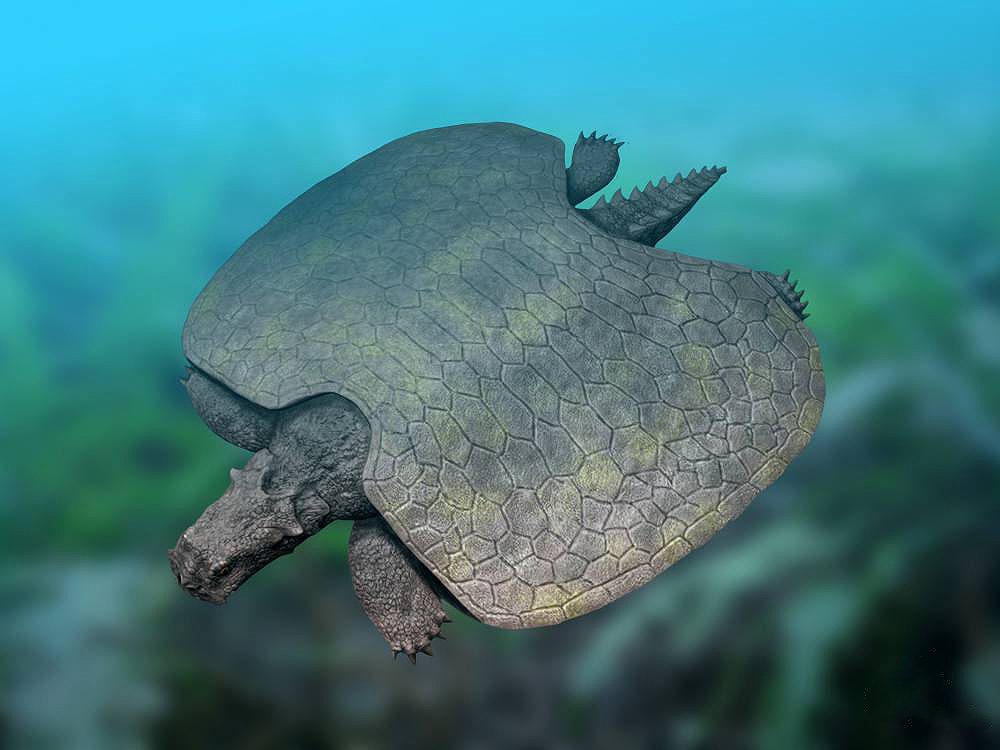
This unique sea reptile was around 3 feet long, and its body was covered in a thick, bony shell. Its teeth were explicitly designed for crushing and grinding hard-shelled food, such as mollusks and crustaceans. Thus, research on this placodont’s history offers insightful information on the development of reptiles throughout the late Triassic epoch.
Festive Fashion for a Fearsome Fossil
The Natural History Museum in London has given its animatronic Tyrannosaurus rex a festive makeover by dressing it in a colorful sweater. This unanticipated fashion choice brings a dash of humor and brightness to the magnificent fossil, making it a joyful sight for the kids and adults at the museum.
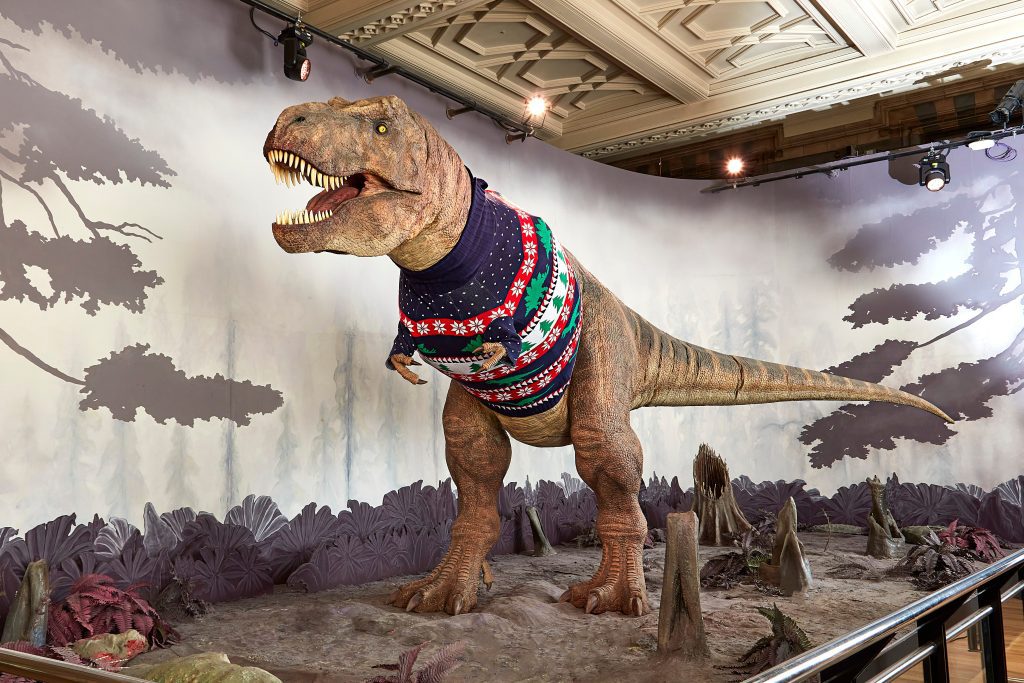
The colorful Christmas sweater lends warmth and pleasure to the ancient predator, providing a whimsical contrast between the violent past and the joyful present. It serves as a reminder that even the most powerful creatures can embrace the ecstasy of the season, inspiring awe and a sense of shared happiness in everyone.
The Mighty Argentinosaurus Unveiled
Be prepared to be astounded by the majesty of the enormous behemoth, Argentinosaurus. This giant prehistoric creature captures our minds with its overwhelming presence and size. Measuring over 30 meters long and weighing up to 70 tonnes, Argentinosaurus was one of the biggest dinosaurs ever to exist.
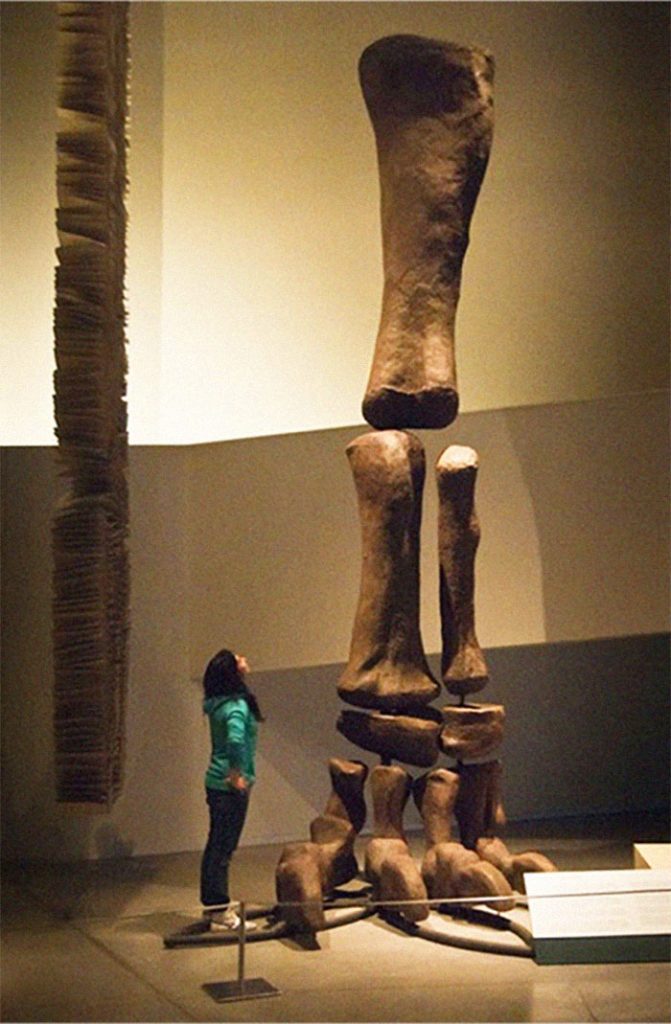
Its colossal frame and long legs highlight its vigor and power. In the late Cretaceous period, some 90-100 million years ago, this enormous herbivore roamed the prehistoric plains. Thus, the study of its fossil sheds important light on the extraordinary variety and adaptability of dinosaurs during the Mesozoic era.
Preserving the Ancient Beauty of Western Australia
These stunning Jimbacrinus crinoid fossils were found in the Gascoyne region of Western Australia. Existing in the Permian period almost 280 million years ago, these paleontological marvels offer valuable insight into the past. Jimbacrinus was an exquisite crinoid species, an extinct marine creature related to starfish and sea urchins.
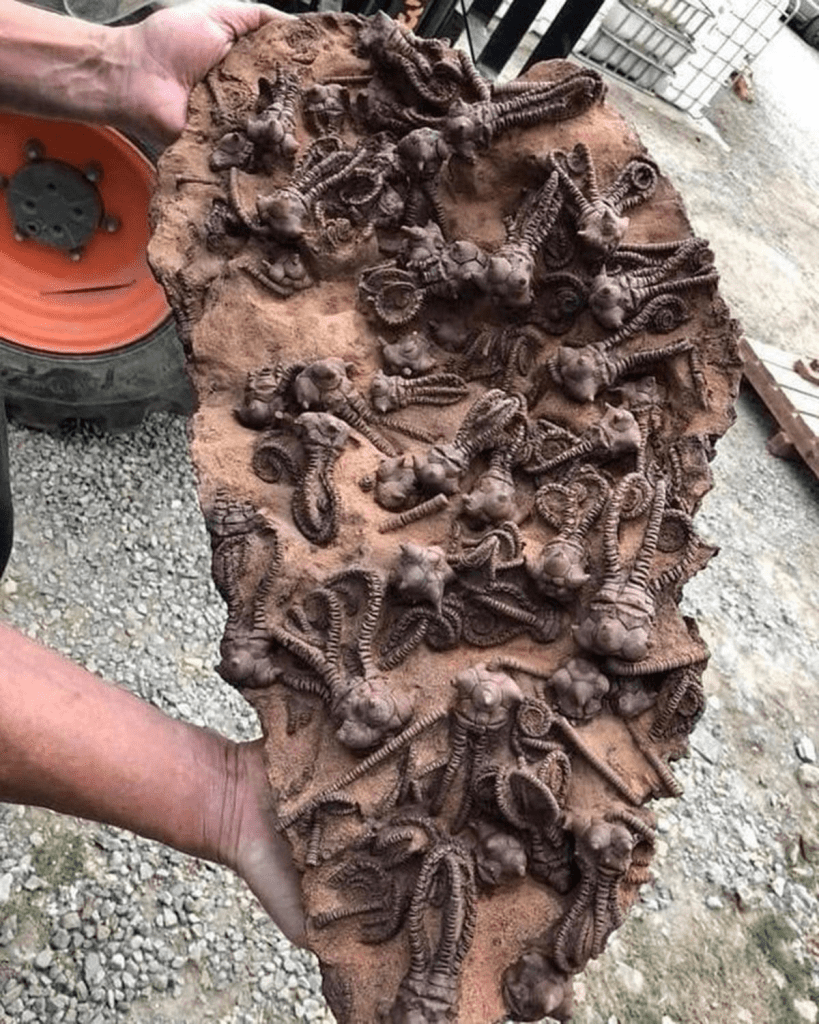
They looked delicate with flower-like structures; Jimbacrinus crinoids had fluffy arms extending from their central body. And this was their defining feature. Thus, the finding of Jimbacrinus crinoid fossils vividly highlights the rich geological history and the ancient marine life of the Gascoyne region.
The Potent Jaws of the Deinosuchus
Here’s the mandible of Deinosuchus, an extinct relative of modern-day alligators. Note its slender body, broad snout, and strong teeth. Deinosuchus lived in the coastal areas of Eastern North America in the late Cretaceous era. They could exert a maximum bite force of 23,111 psi, much higher than a Tyrannosaurus rex.
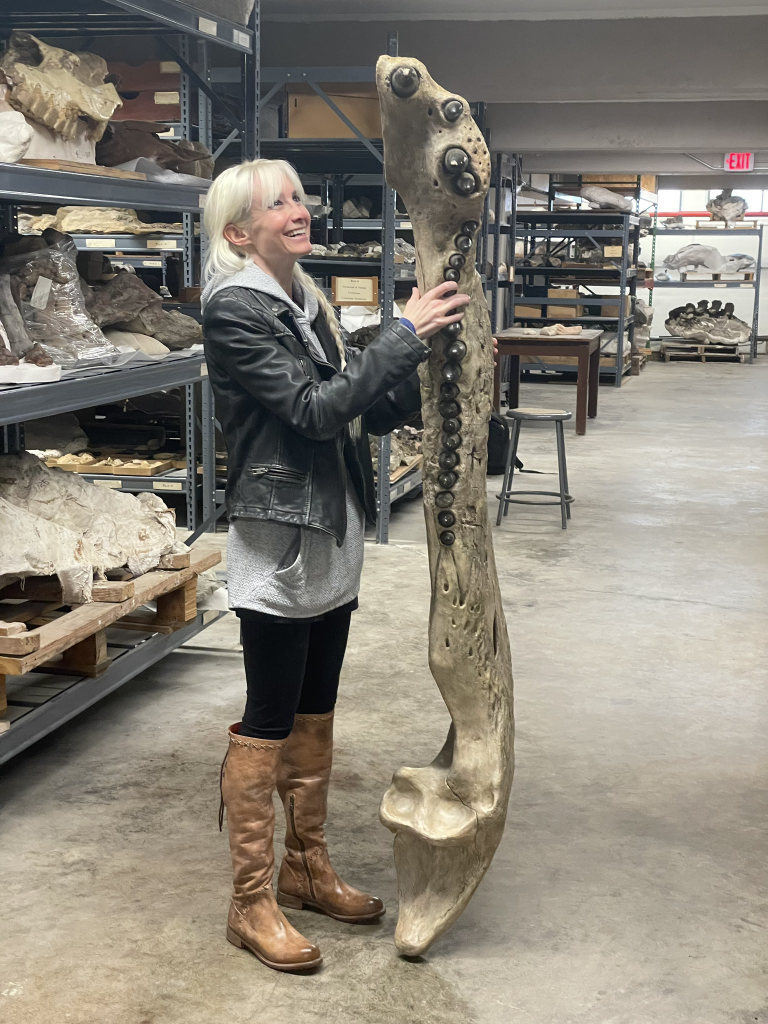
Thus, the accuracy and power of Deinosuchus’ mandible allowed it to catch and eat a variety of prey. This enormous crocodilian was indeed a terrible predator of its day, with its teeth growing to lengths of several inches and crushing bones in minutes.
Gorgosaurus Unleashed
The Royal Tyrrell Museum offers guests a thrilling experience where the powerful Gorgosaurus takes center stage. In its fossilized splendor, the ferocious predatory dinosaur from the late Cretaceous epoch stands tall and provides a window into ancient times. It lets guests be in awe of its razor-sharp fangs, strong limbs, and menacing stature.
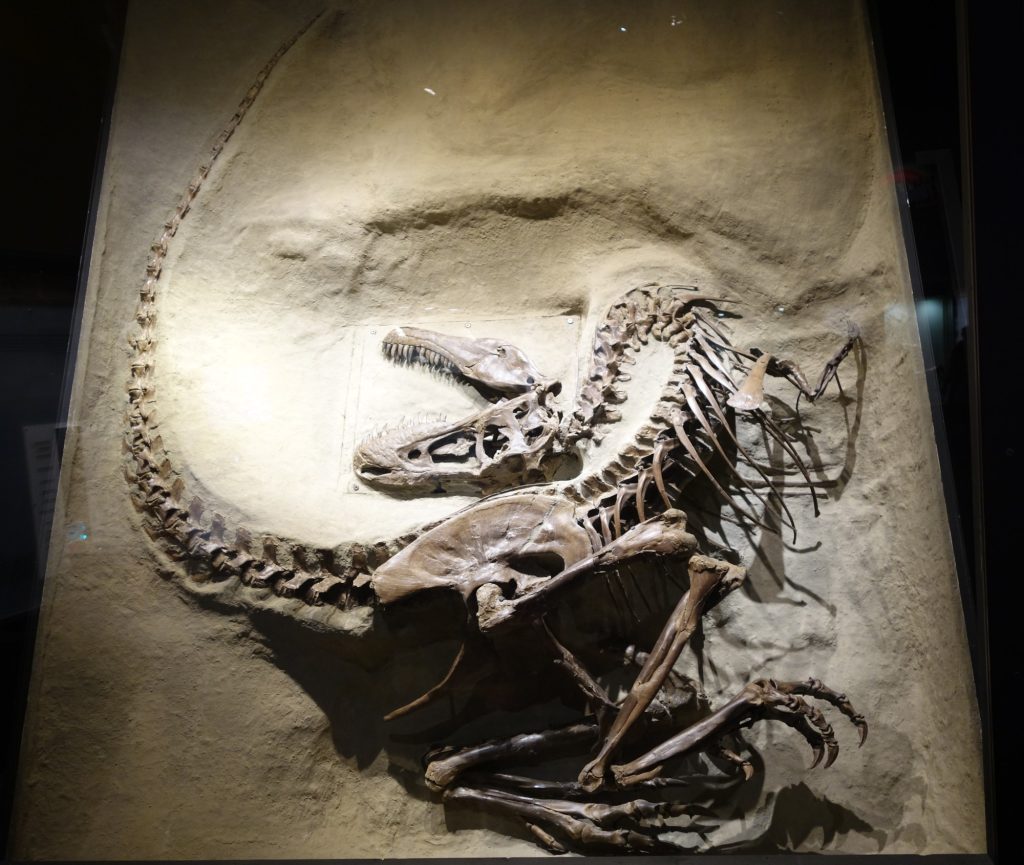
The Gorgosaurus display at the Royal Tyrrell Museum not only imparts knowledge about the dinosaur’s life and times but also brings the ancient era to life. Visitors are submerged in the breathtaking world of this extinct predator throughout the immersive experience, which also offers insights into its hunting tactics, behavior, and ecosystem-related function.
Colossus of the Primordial Seas
This enormous anchovy-like creature, which could reach several feet in length, had a streamlined body and jaws lined with sharp teeth. It lived almost 436 million years ago in the Paleozoic waters, creating a vast range of marine life of that time.
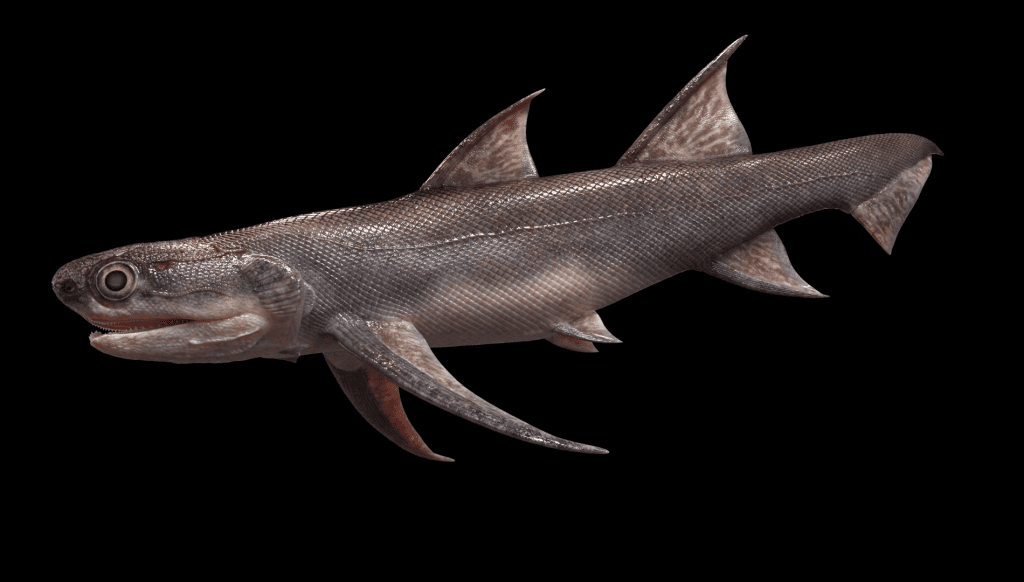
Scientists are trying to evaluate the history of this fish as they analyze these well-preserved fossils, unraveling its position in the intricate network of prehistoric marine ecosystems. The huge Paleozoic anchovy fossils offer important insights into the development of fish species and ancient aquatic environments.
Towering Over Time at the Sam Noble Oklahoma Museum
The magnificent dinosaur Sauroposeidon proteles is one of the tallest sauropods that have ever lived on Earth. About 112 million years ago, during the early Cretaceous period, this enormous titan inhabited the planet. In 2010, the Sam Noble Oklahoma Museum of Natural History had a mount made of the holotype of this typical species.
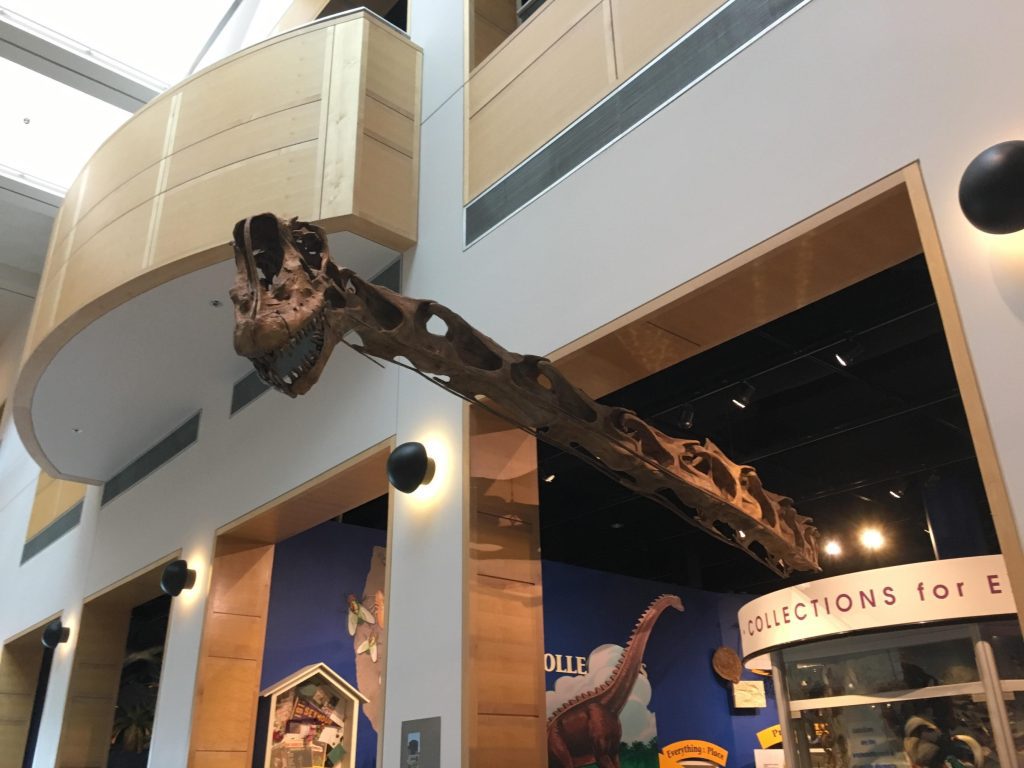
With an estimated height of more than 56 feet, Sauroposeidon had a long neck, an extended tail, and strong legs that allowed it to move around its prehistoric environments. Thus, its holotype gives museum visitors a valuable educational opportunity to discover the fascinating world of sauropods.
Crinoid Maze
The intricate patterns of fossilized crinoids are unmatched. Take this one, for example. Even though the crinoids in this fossil are frozen in time, we can almost see the tendrils moving in a gentle dance among the flowing ocean currents.
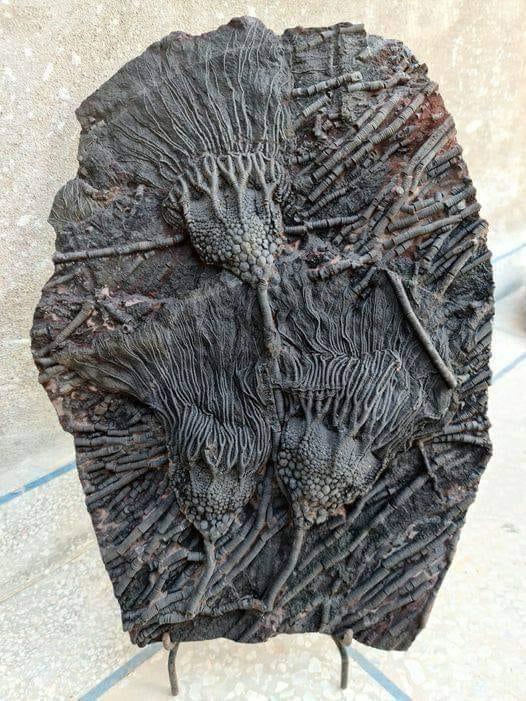
This specimen was found in Morocco. Despite their appearance, both live and in fossil records, crinoids are animals, not plants. It is worth noting that “crinoid” is a class. Even today, there are over 700 species of crinoids still alive.
Mammalian Face-Off
During the Pleistocene epoch, giant creatures roamed the Earth and populated the seas. Among them was the Amphimachairodus giganteus, one of the largest machairodonts. Although such creatures no longer live among us, their distant relatives are near and dear to us.
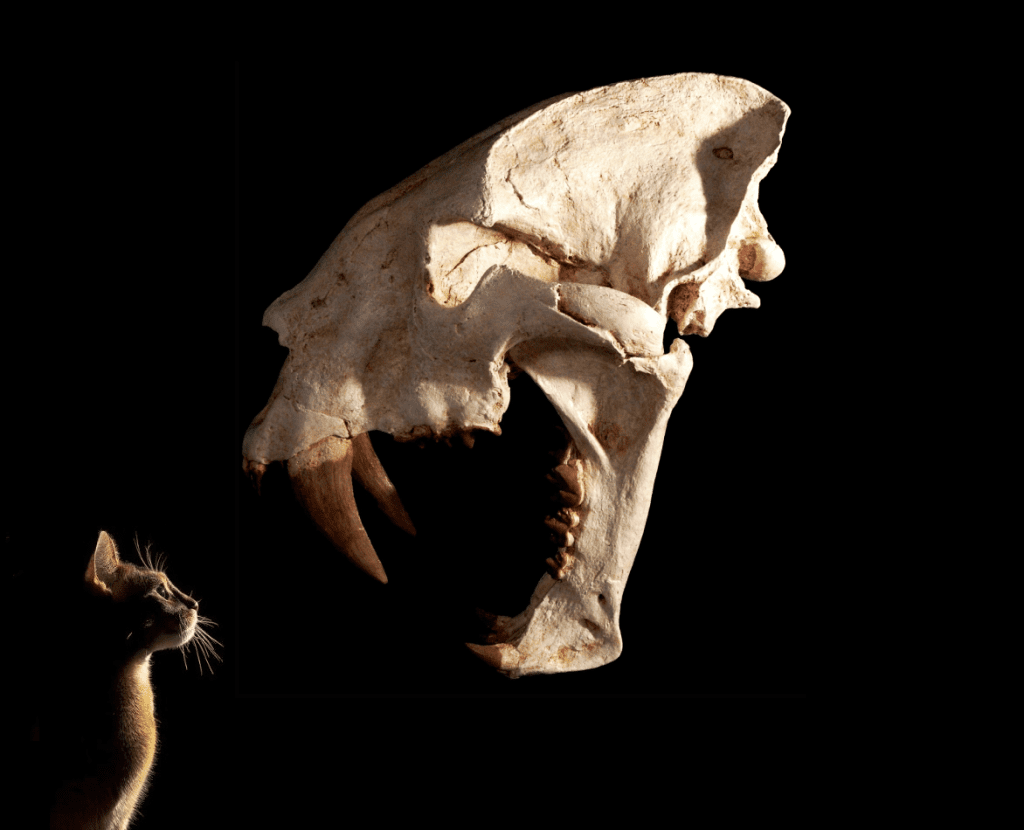
Next to the A. giganteus‘ skull, this common house cat doesn’t seem like the fierce predator they try to be. Comparing living creatures and their relatives gives scientists a glimpse into the history of the world, and helps break down the millions of years of evolution into digestible pieces.
Unveiling the Colossal Sky King
Meet the real sky giant from ancient times, Quetzalcoatlus northropi. This magnificent pterosaur, which had a wingspan of around 15.9 meters, holds the record for being the biggest specimen ever found and very likely the largest animal to have ever flown.
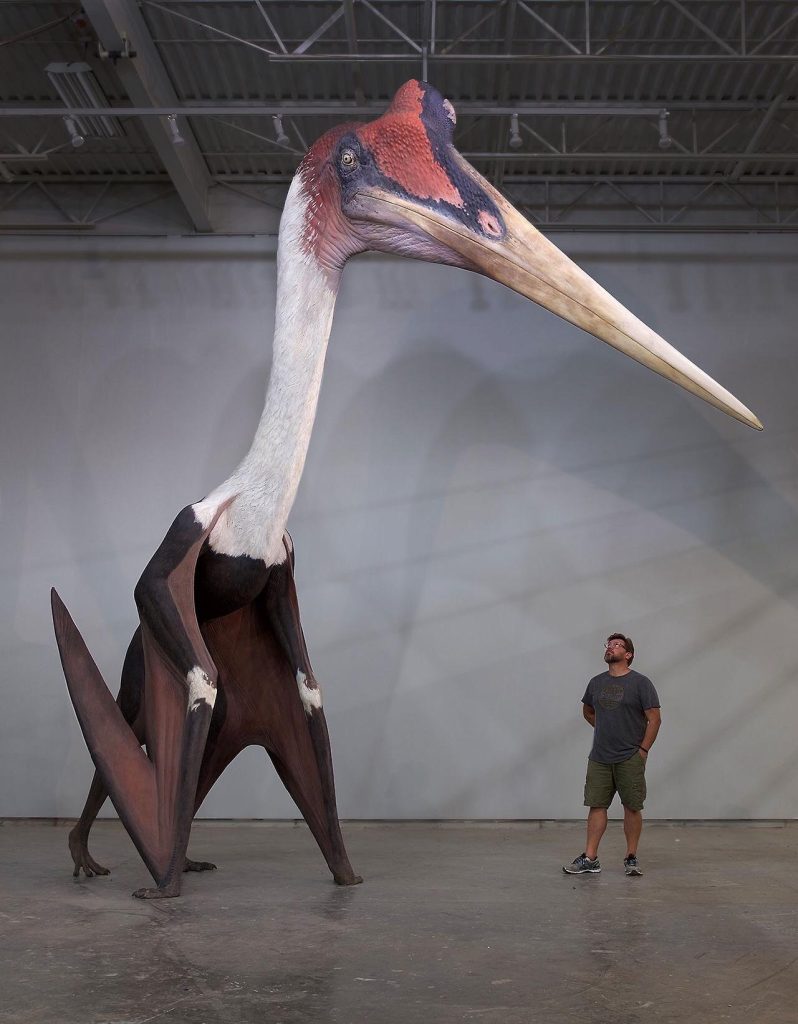
As we examine its enormous size, pointed beak, and long legs in this life-size model of Quetzalcoatlus northropi, we are taken to an era where giant beasts dominated the skies. This beautiful pterosaur reminds us of the amazing wonders that previously inhabited our world.
